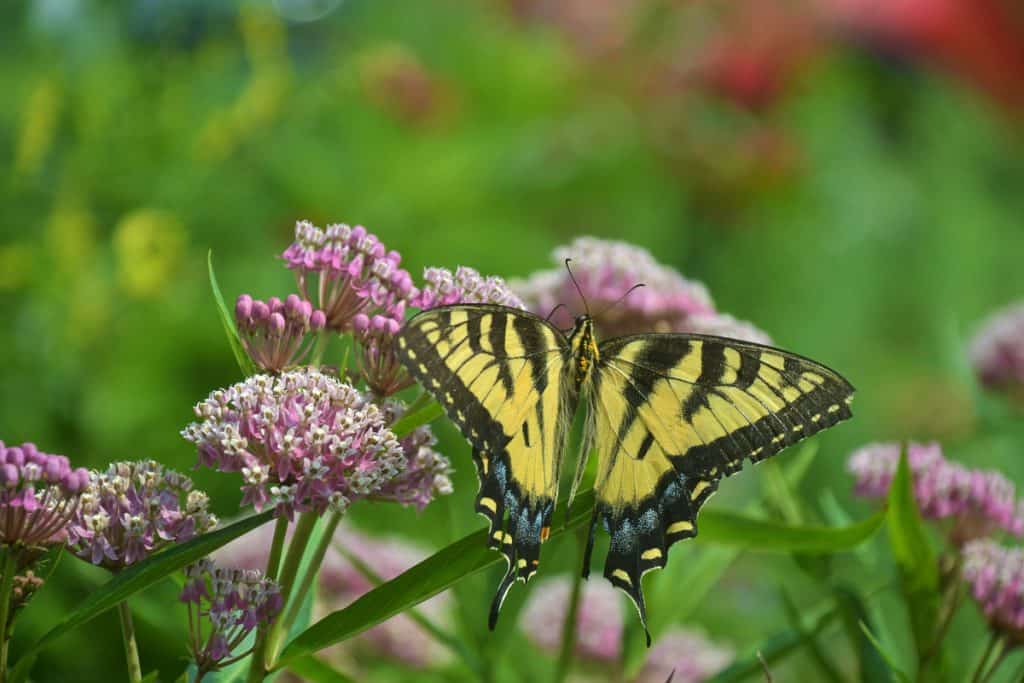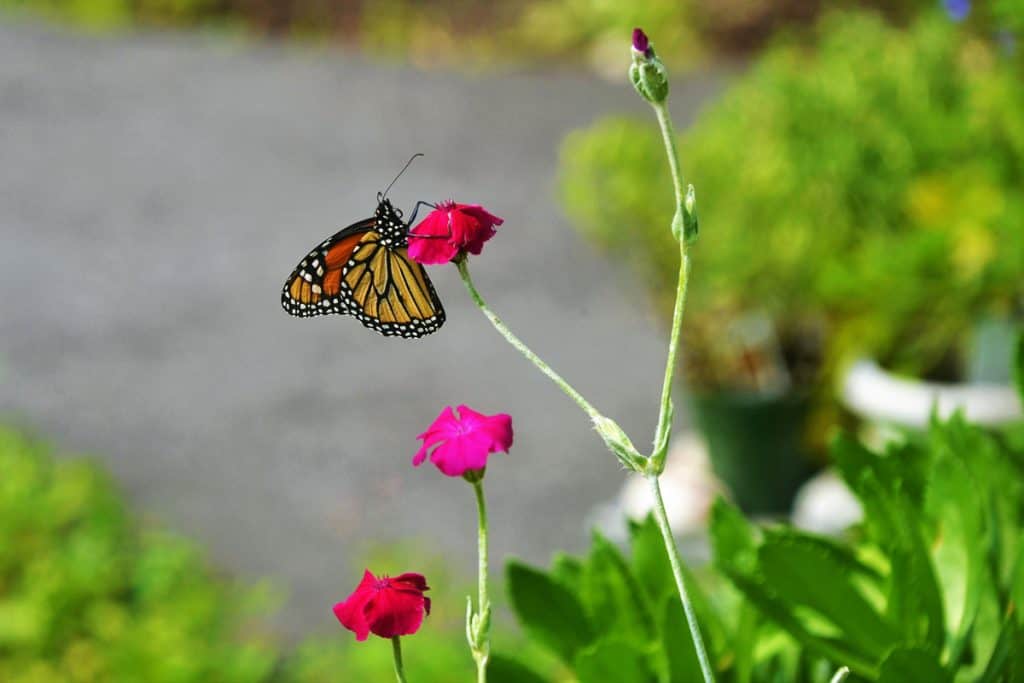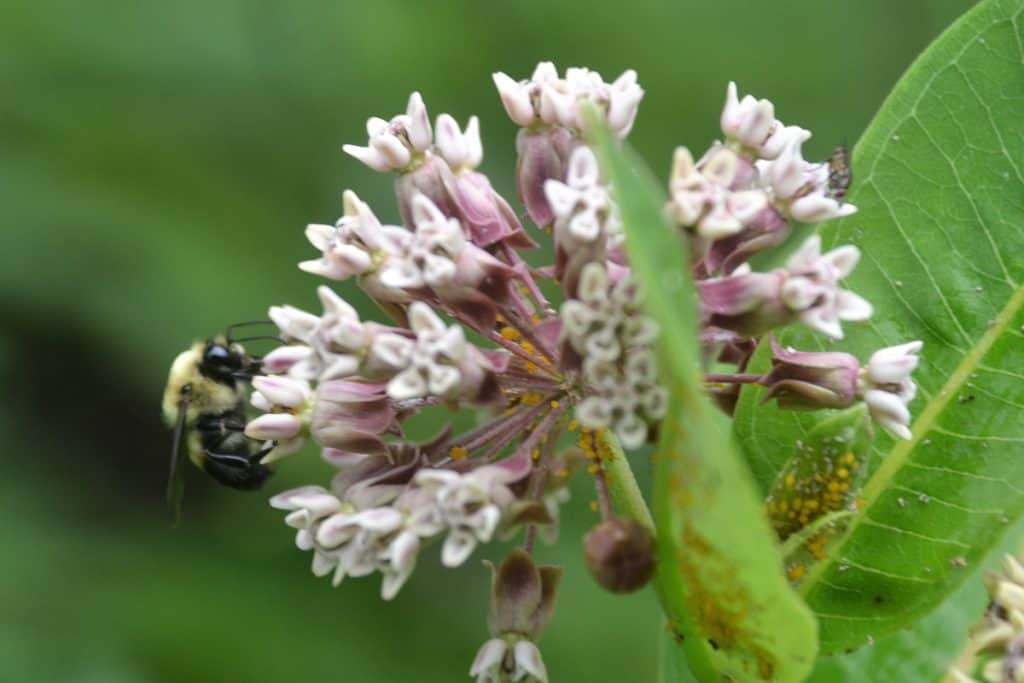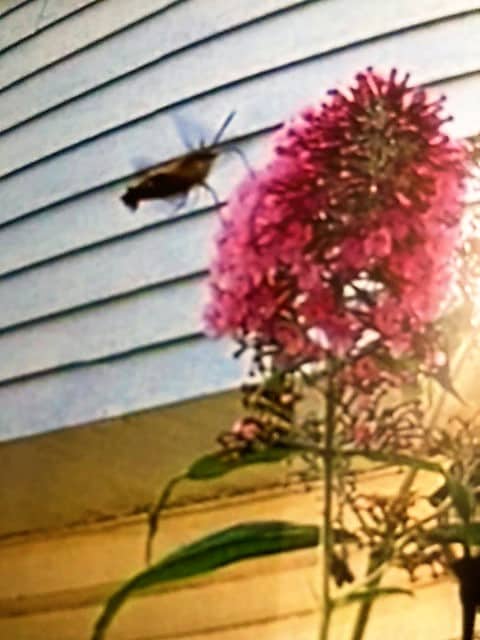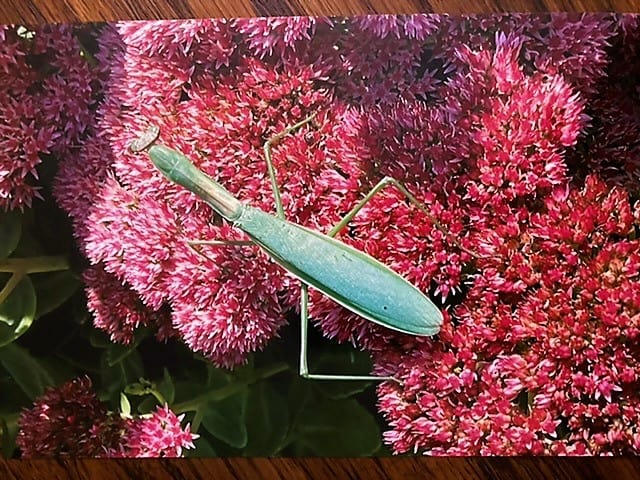This week’s topic was inspired by garden club member Kathy Murphy’s wonderful insect photos. Kathy says, “Life abounds around us, above us, and below us and if we look, listen, and really hear we can sometimes be surprised at the beautiful and amazingly engineered creatures.”
If you are severely entomophobic, you might want to avoid reading this column this week! Based on discussions with clients and acquaintances, and not on any scientific study, distaste for insects and other “creepy crawlies,” as well as snakes, squirrels and even chipmunks, may be keeping some people from enjoying gardening. In a recent insect survey sponsored by Zevo, a pest control manufacturer, people ranked their “most hated” insects, and the “winner” was the cockroach. A few non-insects (spider, mites and worms) also found their way onto the survey list. While the results were interesting, it made me think I have different attitudes than many of the respondents to that survey. Insects frequently mentioned included disease carriers like mosquitos and ticks (the latter not actually insects but arachnids), and crop destroyers, such as some locusts, as well as somewhat more surprising choices, like bees and ladybugs. Since most kids and adults I know like ladybugs (Coccinellidae) and appreciate the services they perform in devouring some garden pests, I can only assume it was some unpleasant experience with nonnative ladybugs which sometimes invade homes that got them ranked on this list at all. Among my gardening friends, there are many insects that might be seen as “most loved,” and these would include butterflies, bees and other pollinators, and certainly beneficial insects like ladybugs.
Clearwing hummingbird moth, also known as humming bug (Hemaris thysbe) is an interesting moth active in the daytime. Its fluttering wings and activity around flowers where it seeks nectar make it look a lot like a hummingbird. Like actual hummingbirds, it seems to be especially fond of tubular flowers as an adult. At this time of year, it is likely to be seen around bee balm, honeysuckle and trumpet vine, but it will hover around many other garden flowers, too. In its larval stage it is a hornworm (meaning that it appears to have a hornlike structure on its back end) which feeds on cherry, hawthorn and several other species. A relative, the tomato hornworm (Manduca quinquemaculata), is well known to vegetable gardeners. Because of its appealing behavior, resemblance to hummingbirds and usefulness in pollinating garden plants, adult humming bugs are very popular in gardens.
Praying mantises, predators of both harmful and beneficial insects, are often sold to help control garden pests. They are also one of the most popular insects for keeping as a house pet, usually in an aquarium or similar enclosure. Introduced species like Chinese mantis (Tenodora sinensis) and European mantis (Mantis religiosa) are commonly found in our neighborhoods. They are experts at camouflage and often wait motionless on a plant or the ground for prey to come to them. Unfortunately, they are known to eat bees, small reptiles and amphibians and even small birds as well as garden pests. Chinese mantis is the largest species, often measuring over 4″ long, while the European species is 3″ or so.
Many people are planting milkweed and other butterfly-friendly plants in hopes of encouraging a return of species like monarch butterflies, whose numbers have seriously dwindled in recent years. At the Saugus Ironworks, wild milkweed plants are encouraged for this reason, and many groups as well as individuals are planting pollinator-friendly gardens. Saugus Ironworks Park Ranger Paul Kenworthy has seen a few monarch butterflies this summer at the site, but not as many as in former years. The Saugus Garden Club a few years ago planted a butterfly garden at Breakheart Reservation, near the exercise area.
I enjoy seeing the bees and other pollinating insects in the flowers in my garden. Last year I saw a monarch occasionally, but up until Wednesday I hadn’t seen a single one. Then I was weeding and my husband came out the door and pointed out a monarch butterfly right behind me, and then within minutes the swallowtail showed up, too!
Editor’s Note: Laura Eisener is a landscape design consultant who helps homeowners with landscape design, plant selection and placement of trees and shrubs, as well as perennials. She is a member of the Saugus Garden Club and offered to write a series of articles about “what’s blooming in town” shortly after the outbreak of the COVID-19 pandemic. She was inspired after seeing so many people taking up walking.

